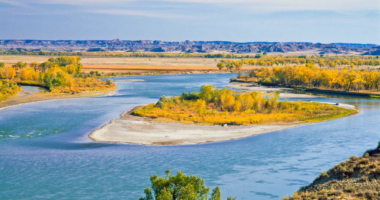ACTION ALERT: Support Conservation via Science

As part of a required biennial review under the Agricultural Bioterrorism Act of 2002, the Center for Disease Control and Prevention in the Department of Health and Human Services (CDC/HHS) is considering whether or not to remove the disease Brucella abortus from a list of agents prohibited for open-air study. Believe it or not, this seemingly wonky review is very significant to wildlife conservation in Montana. The Greater Yellowstone Area is a reservoir for Brucella abortus and because wildlife is a significant reservoir of the Brucella disease that can also affect livestock, it has proven to be a significant hurdle in the conservation of bison. While a vaccine exists for the brucella disease in livestock, the development of a similar vaccine for wildlife is not possible given the diseases current “select agent status”. In 2017, almost every Montana legislator supported a state resolution to suggest this action. Two years ago, the CDC/HHS and USDA received just 40 comments on this issue, but it’s close to home for us, so let’s let them know we are listening!
Who, What, Where, and How to Comment: Be advised that all of your comments on these issues will become public information
Both the CDC/HHS and the USDA need to be contacted and encouraged to remove Brucella abortus from “select agent status”. Both agencies can be contacted electronically or via print mail. Comments are due May 18th.
-
- To comment electronically to the USDA, Click here
- To comment electronically to the CDC/HHS, Click here
- To comment by mail
CDC and HHS Postal Mai/Commercial Delivery: Division of Select Agents and Toxins, Centers for Disease Control and Prevention, 1600 Clifton Road NE, Mailstop H21-7, Atlanta, Georgia 30329, ATTN: RIN 0920-AA71Additional
USDA: Postal Mail/Commercial Delivery: Send your comment to Docket No. APHIS-2019-0018, Regulatory Analysis, and Development, PPD, APHIS, Station 3A-03.8, 4700 River Road Unit 118, Riverdale, MD 20737-1238
Here is more information and some example comments to get you started:
- Brucella infections have a low case fatality rate, with an untreated fatality rate usually ranging from 1-2% of those identified with the infection (Spickler, 2018).
- Disease caused by these bacteria is treatable with antibiotics (Spickler, 2018).
- There is no indication that Brucella is transmitted between people by casual contact under ordinary conditions. Humans are typically infected from exposure to animal reservoirs or animal products; transmission to humans from wildlife is a rare event unless an individual directly handles infected animals, such as in butchering meat (Godfroid et al., 2013).
- Brucellosis causes mild clinical symptoms (flu-like illness); incubation periods typically range from 1 to 4 weeks, but can extend to 6 months (Olsen et al., 2018).
- Brucella abortus is found in GYA elk and bison and occasionally spills over into cattle which causes increased testing costs and quarantine of the affected herds. A vaccine for livestock exists, but it is not effective enough to allow infected wildlife and livestock to comingle without risk. A major obstacle to designing better tools and vaccines is that the B. abortus is considered a “select agent” which makes it impossible to conduct research studies in an open-air facility, and instead studies can only be done within one fully enclosed research lab – which is extremely costly and has limited capacity.
Template comment
To whom it may concern,
I am submitting comments on the Select Agent status of Brucella abortus. I support the removal of B. abortus, B. suis, and B. melitensis from the select agent list.
My background and connection to this issue is: (A short paragraph on your personal background and operation, including location, or for non-livestock producers, describe your interest in the management of brucellosis.)
This issue impacts me: (Describe the impact to your operation such as the impact of livestock and wildlife quarantine, requirement to vaccinate cattle, tolerance for wildlife, conservation of wildlife, preservation of MT wild heritage and working lands heritage, etc.)
Any other reasons for delisting: (some examples)
- Brucellosis is not a good terrorist weapon because of effective testing, and readily available, inexpensive, and effective treatment
- Existing restrictions make it nearly impossible to develop additional tools to respond to the Greater Yellowstone Area as a source for Brucella
- The range of wildlife with brucellosis is expanding, and therefore, brucella is becoming more abundant.
I support the delisting of Brucella spp. from the Select Agent List so that effective research can be conducted towards the development of improved vaccination, diagnostics, and other management options.
Thank you for this opportunity to comment and your consideration of my comments.
Sincerely,
Whenever you comment, make your message personal:
Even a short personal statement has value. You may consider including:
-
- A statement supporting your suggested action
- A little bit about you
- A statement on how the issue affects you personally, or why you feel the issue is important.